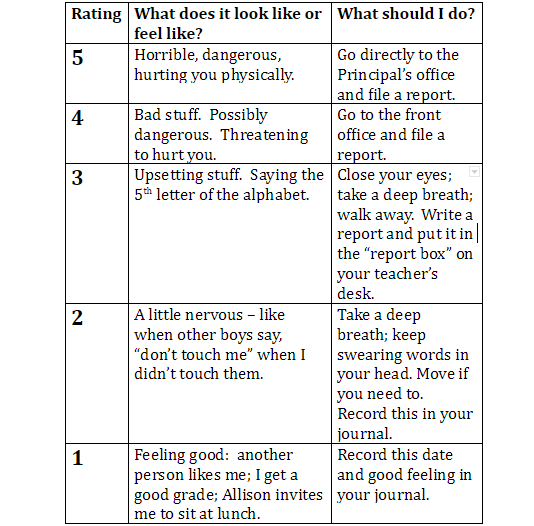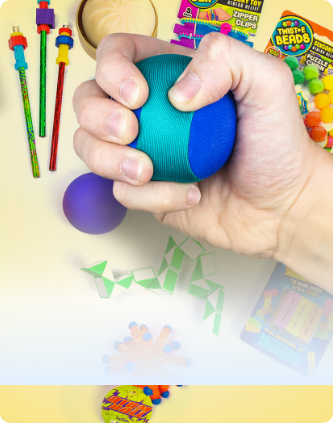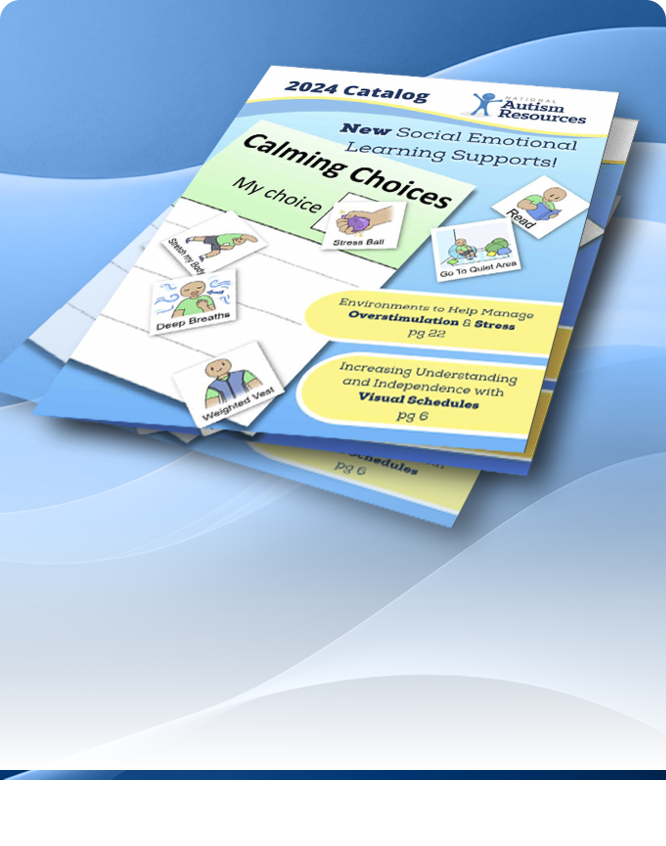How to Use a 5-point Scale to Help Evaluate Problems
Posted by Kari Dunn Buron MS, Autism Education Specialist on Mar 21st 2022
According to the CDC 9.4 percent of children ages 3-17 have a diagnosis of anxiety and 8.9% of students have behavior problems. This data is based on 2016-2019 data. (1) Since this data was gathered all of us have had to deal with anxiety, uncertainty, and drastic changes to our routine as a result of Covid19. Now more than ever students need support with emotion regulation.
Emotion regulation (ER) can be simply defined as the modification of a person’s emotional state. This regulation of emotion should lead to positive, goal directed behavior. Some researchers believe that ER might be compromised in autism spectrum disorder (ASD), which could lead to maladaptive modifications. The use of maladaptive modifications can then lead to unexpected and counterproductive behavior.
Whenever someone with ASD responds to a social/emotional demand or event by hitting, biting, refusing, screaming, swearing, or even self-injury, parents and educators should consider the issue of ER. How does this person’s autism interfere with the ER process? Does she think in very rigid and inflexible ways? Does he misinterpret social information? When an educational team considers challenging behavior in this way, it leads away from blaming and punitive strategies and towards positive teaching of adaptive strategies.
One strategy, considered to be highly adaptive in ER, is called “reappraisal”. Reappraisal involves helping a person to rethink how he is thinking about a given situation. One way to do this is through the use of a highly systematic 5-point scale. The 5-point scale makes use of common learning strengths. It is visual, predictable, repetitive and systemized.
Many parents and professionals who are familiar with The Incredible 5-Point Scale, often confine its’ use to labeling emotions. This is wonderful and “labeling” emotions is also a valid strategy for teaching adaptive regulation. However, the 5-point scale can also be used to teach cognitive reappraisal.
To illustrate how this might work, let’s take a look at the story of Sam. Sam is a 5th grade boy with autism. Other students sometimes tease Sam because of his unique behavior. For example, Sam doesn’t understand sarcasm or other subtle meanings of social language and so is often offended by the words and actions of others. Sam also has an unusual “fear” of the letter “E”. When someone uses the letter E, Sam screams and covers his ears. Over the years, some of Sam’s classmates had begun teasing Sam about this unusual fear. Another child might walk past him and whisper, “E”. Sam’s response was to scream and hit at the offending student. Initially Sam got into trouble because of these responses. He was sent to the office, kept in from recess, and asked to write apology notes. A functional assessment of the behavior was done and Sam’s mother reported this fear of E and Sam confirmed that he was fearful of other people making the sound of the letter E (which he referred to as “the 5th letter of the alphabet).
Sam’s school instituted an anti-teasing and bullying program school-wide. Sam was told that he should report anyone who teased him. Soon Sam was making trips to the Principal’s office 20-30 times a day to report all kinds of perceived infractions of the rule. He seemed to be misinterpreting his classmates’ behavior and over-interpreting the rule. He also seemed to like the act of writing reports about other students’ behavior. The educational team decided to teach him to rethink how he was thinking about social interactions using the 5-point scale, and also to make use of his interest in writing reports. Here is the scale they developed.

In this case, the scale worked well to repetitively rate social situations and to give Sam clear ideas about what to do. The reports served to prompt problem solving sessions with his special education teacher, and the positive reports were charted on his calendar to illustrate how positive some social interactions can be.
Exhibiting challenging behavior is by far the biggest obstacle to long term success for any child, and an essential first step towards change is for parents, teachers and other caregivers to begin “teaching” adaptive skills needed for self-control and regulation.
Kari Dunn Buron is the author and co-author of a series of books about using The Incredible 5-Point Scale (©2012; 2003).
(1) Bitsko RH, Claussen AH, Lichtstein J, Black LJ, Everett Jones S, Danielson MD, Hoenig JM, Davis Jack SP, Brody DJ, Gyawali S, Maenner MM, Warner M, Holland KM, Perou R, Crosby AE, Blumberg SJ, Avenevoli S, Kaminski JW, Ghandour RM. Surveillance of Children’s Mental Health – United States, 2013 – 2019 MMWR, , 2022 / 71(Suppl-2);1–42.







